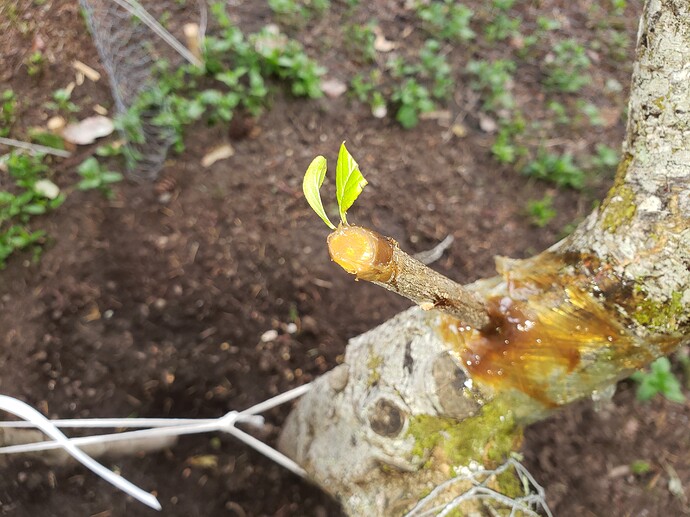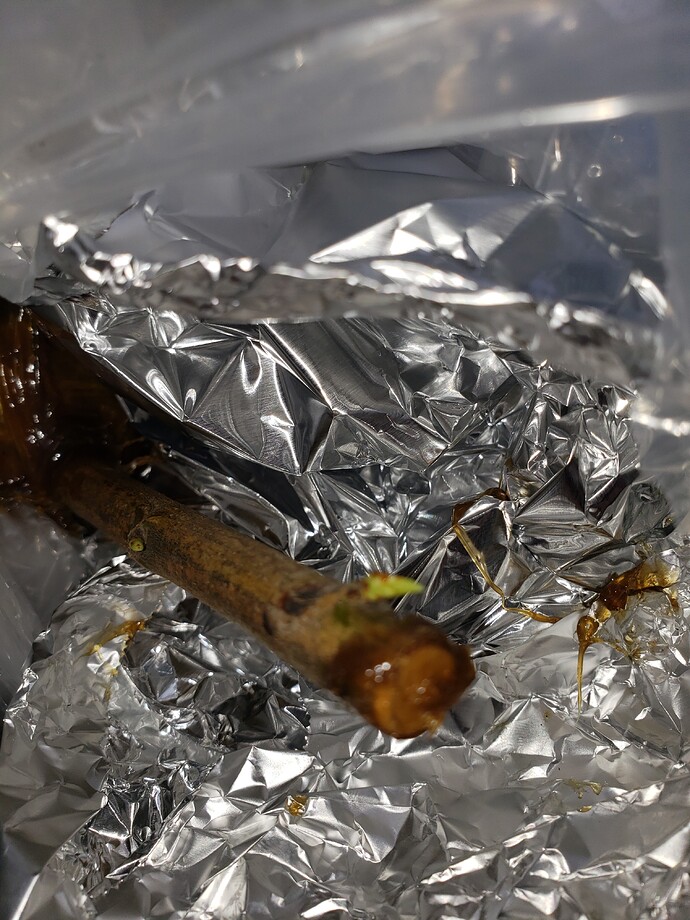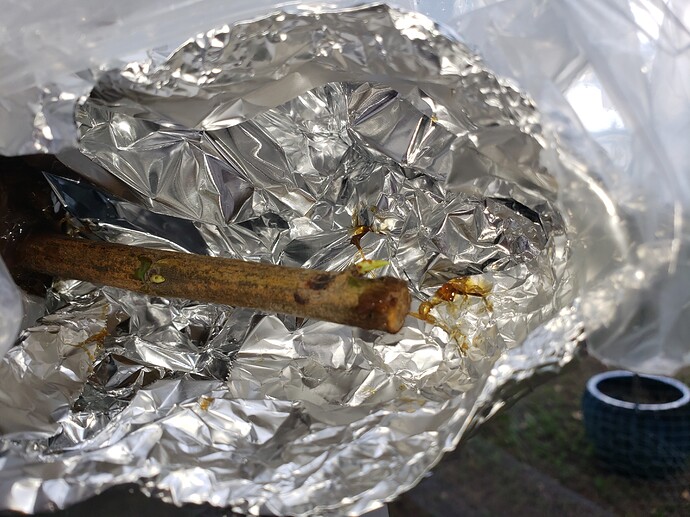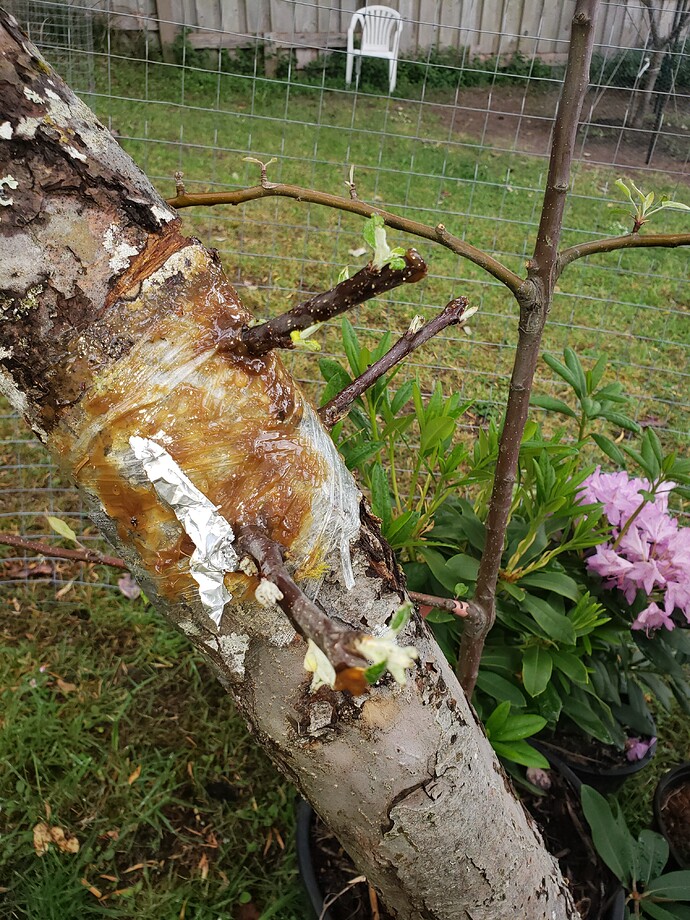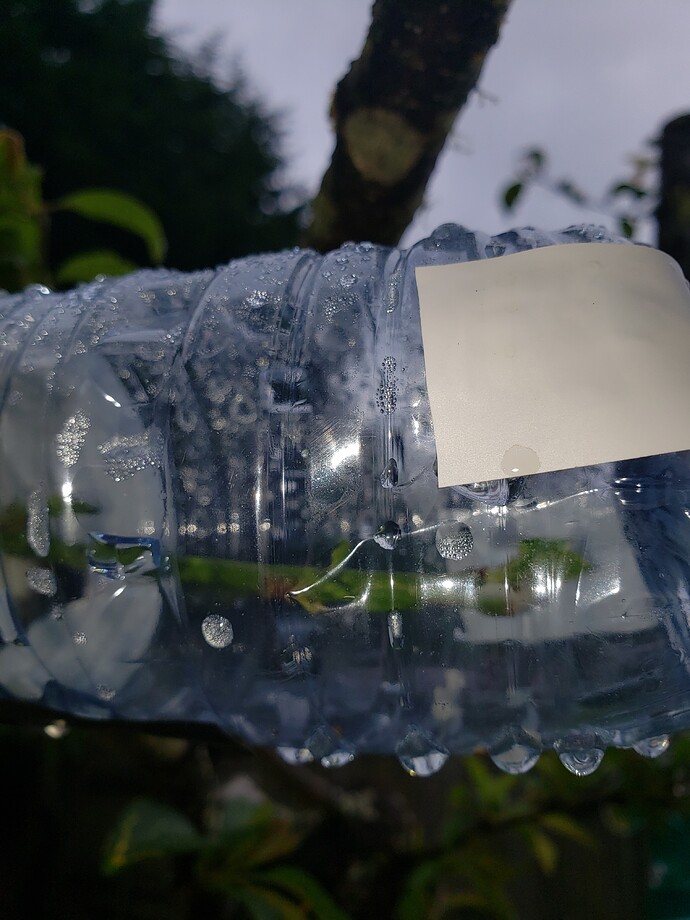Most of the grafts I initially did with a drill seem to be doing OK. One has died that I’m not surprised about as I used green wood and it was on a very small branch that the drill went completely through. The donator Beauty plum tree was a new purchase with no hardened off wood I could spare to cut off, so I could only find green wood to use. One graft with the green wood is still alive, but I’ve left it enclosed inside a plastic bottle to prevent desication. I doubt any of the few green wood grafts I did will survive in the end. Worth a try though I guess.
I purchased another plum tree about a week ago. It was a real spindly Black Amber that was the only one left at a local nursery. Personally, I would have thought it a poor choice to buy (but there were no others of that variety) and it is not often found in nurseries in my parts.
There wasn’t much growth on the tree, so there wasn’t much to harvest for potential scion. I cut 1 small branch off that I managed to make two drill grafts from.
They’ve only been on the tree less than a week, but they actually seem to be taking. Considering the temperatures have really spiked here the last few days that’s quite surprising. Especially as on one of the grafts I did not tape or bag the graft.i merely added grafting wax to the joint at the tree trunk and a little wax on the end of the stub.
Surprisingly, for being uncovered in the open air and recent heat it seems to be starting to grow from latent buds on the scion.
The other Black Amber scion that I grafted to the same Shiro plum tree seems to be budding (but barely noticeable) from latent buds I cut from the same branch. Considering this scion was completely enclosed and sealed by a plastic bottle I would have thought it would have been the faster starter.
Many of the other drill grafted scions are holding there own, but mostly not pushing new growth. A few are seeming to not like the change to hot weather now that June has heated up. Other new grafts with latent buds seem to be actually liking the new heat and appear to be coming to life (too soon to really tell for sure).
In the last few days I recently did two drill grafts and wrapped the scions in parafilm. Too soon to say with those either, but they may be coming to life as well. These grafts were using sticks with latent buds as well, not fresh green growth. I guess the juries mostly still out on how effective this method is, as only one graft has failed for sure (and that was a very poorly done graft).
You can see another Nadia drill graft I did a few weeks ago growing in the background on the same trunk.
How many will actually survive the real summer heat of July and August is hard to say.Its been fun and worthwhile experimenting regardless.
I added some blood meal to the older trees with the new grafts yesterday hoping to promote more growth on the new grafts. I’m not sure if that was a great idea, but I thought I’d see if it would help with spurring the new scions to sprout more vigorously. I’m not into chemical fertilizers, so I figured blood meal was the way to go. I’m in a watershed where use of phosphorous in fertilizers is very discouraged.
Any other ideas appreciated.





